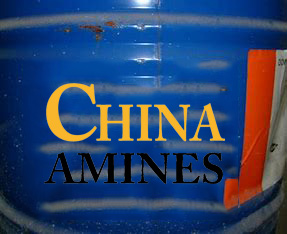1. Chemical Structure and Properties
Molecular Formula: C₈H₁₆O₄
Structural Formula:
CH₃O-(CH₂CH(CH₃)O)₂-COOCH₃
A glycol ether ester combining a methyl ether group, two propylene oxide units, and an acetate ester.
Physical Properties:
Appearance: Clear, colorless liquid with a mild ester-like odor.
Boiling Point: 245–250°C; Density: 1.01–1.03 g/cm³; Vapor Pressure:<0.01 mmHg at 25°C.
Solubility: Low in water (<0.1% w/w); miscible with alcohols, ketones, and esters.
Chemical Properties:
Hydrolysis Stability: Resistant to hydrolysis under neutral conditions; degrades in strong acids/bases to acetic acid and dipropylene glycol methyl ether.
Thermal Stability: Stable up to 200°C; decomposes above 250°C, releasing aldehydes and carbon oxides.
Flammability: Combustible (flash point: ~120°C).
2. Industrial Applications
Coatings & Inks:
High-Boiling Solvent: Enhances flow, leveling, and gloss retention in automotive and industrial coatings (e.g., epoxy, polyurethane).
UV-Curable Systems: Solvent for acrylate-based inks and adhesives with low volatility.
Electronics Manufacturing:
Photoresist Stripper: Removes hardened resists from silicon wafers without corroding metal traces.
Flux Cleaning: Effective in post-soldering PCB cleaning.
Cleaning Formulations:
Precision Degreaser: Used in aerospace and medical device manufacturing for removing oils and greases.
Personal Care:
Plasticizer: Adds flexibility to nail polish and hairspray formulations.
3. Safety and Toxicology
Health Hazards:
Acute Exposure:
Skin Contact: Mild irritation (rabbit skin LD₅₀: >2,000 mg/kg); prolonged exposure may cause defatting.
Inhalation: Low volatility minimizes risk (TLV-TWA: Not established; handle as nuisance vapor).
Ingestion: Low toxicity (oral LD₅₀ rat: >5,000 mg/kg); gastrointestinal discomfort.
Chronic Effects:
Reproductive Toxicity: No teratogenicity observed in OECD 414 studies.
Organ Toxicity: Negligible hepatotoxicity or nephrotoxicity in subchronic rodent studies.
Protection Measures:
PPE: Nitrile gloves, safety goggles, and general ventilation.
Storage: Stable in HDPE containers; avoid prolonged light exposure.
4. Environmental and Regulatory Compliance
Environmental Impact:
Biodegradability: Slow (OECD 301F:<30% in 28 days); moderately persistent in soil and water.
Aquatic Toxicity: LC₅₀ (fish, 96h): >100 mg/L; EC₅₀ (daphnia): >50 mg/L.
Bioaccumulation: Low (log Kow: ~1.9).
Regulatory Frameworks:
EU:
REACH: Registered with no SVHC listing; CLP classification Not Hazardous.
USA:
EPA: Exempt from VOC status under 40 CFR 51.100(s)(1); TSCA-listed.
China:
GB 13690-2009: Classified as General Chemical (non-hazardous).
Waste Management:
Incinerate in approved facilities; landfill disposal permitted for small quantities.
5. Case Studies and Application Insights
Case 1: Automotive Clearcoat Reformulation (PPG, 2023):
Challenge: Reduce solvent emissions in high-gloss automotive clearcoats.
Solution: Dipropylene glycol methyl ether acetate replaced 15% of xylene.
Result: Achieved 25% lower VOC emissions (ASTM D6886) while maintaining scratch resistance (ASTM D3363).
Case 2: Semiconductor Photoresist Innovation (Intel, 2022):
Process: Adopted dipropylene glycol methyl ether acetate for 5nm-node lithography stripping.
Outcome: Reduced residue by 90% and extended tool lifespan by 20% (SEMI S8-0703).
Comparative Analysis:
Dipropylene Glycol Methyl Ether Acetate vs. Propylene Glycol Methyl Ether Acetate (PGMEA):
Pros: Higher boiling point (better for high-temperature processes); lower dermal absorption risk.
Cons: Higher viscosity (~20 mPa·s vs. 5 mPa·s) limits use in spray applications.
Dipropylene Glycol Methyl Ether Acetate vs. Ethyl Lactate:
Pros: Superior solvency for polar resins; lower cost.
Cons: Ethyl lactate is biodegradable but less effective in heavy degreasing.
Specifications:
Dipropylene Glycol Methyl Ether Acetate is a clear, fast-evaporating solvent with excellent solvency and low odor, commonly used in coatings, paints, and cleaning products, available in bulk from China Amines Co.


